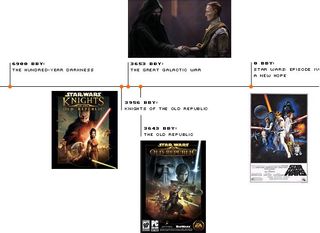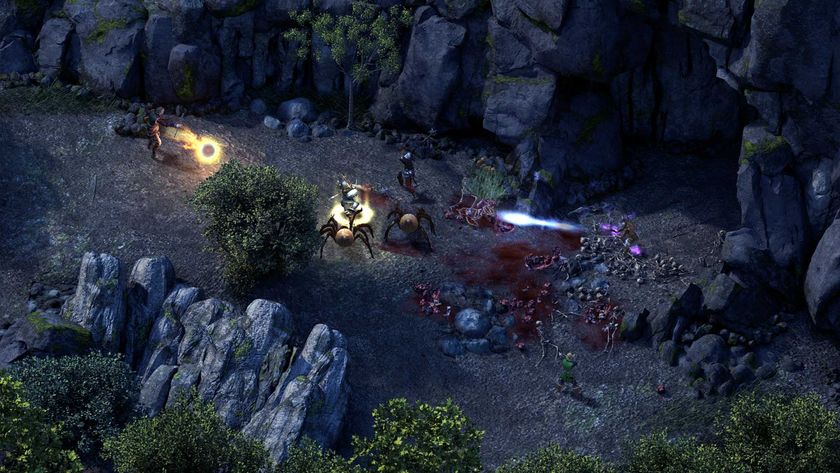Why you can trust 12DOVE
Worlds of Star Wars

Above: Even though it got boring after a while, Nar Shadda was definitely unique
Several elements of the MMO genre are necessarily modified when the setting takes to the stars. Instead of dropping players onto a supercontinent and having them travel between zones, the game’s locations are spread throughout the galaxy, with each planet equating to about the same amount of content that would normally be found in a traditional MMO zone. On the one hand, it makes the game, on the whole, feel smaller, since no one planet is all that massive. Some are large and expansive, but there’s never the feel of living in a single, massive, cohesive world that some other games conveyed.
With this bad comes some good: the planets are much more diverse than typical MMO zones. The wildlife varied drastically between planets, as it did in the films, and the story changed more drastically depending on the planet we landed on. Tatooine has both Imperials and Republic forces fighting against the Sand People and Jawas while taking orders from officers complaining about being stuck out in the middle of nowhere, whereas traveling to Alderaan threw us into the middle of bitter political battles, and had us working with prestigious families and royalty.

Above: SWTOR takes place thousands of years before Lucas added in that CG dewback
Other planets, like the crime-ridden planet of Nar Shadda and the massive megacity of Coruscant, bring an urban flavor and maintain a wonderfully Star Wars feel, reminding us of the better parts of the prequels as we traverse city streets battling gangs and muggers instead of slaughtering tauntauns. The later planets actually move the story forward, with Taris and Corellia doing a great job at making you feel entrenched in a war of galactic proportions.
Your personal story
Another element that both improves and takes away from the game are instanced areas, which are used more fluidly and dynamically than they are in any other MMO. Quests usually start in an open area, but will eventually include passing through a translucent green door that creates a separate version of the area you’re walking into for your group. It’s completely seamless, with no load times or lag, and can provide you with a private dungeon or a single room in a massive city. Even in a game full of brilliant steps forward, this single element might be the most innovative aspect of the entire experience – gone are the days of standing in line for a boss to spawn, waiting around to loot an objective item, or fighting through overcrowded dungeons with two-dozen other players. Most of the time. There are still occasional spots like this in the open world, but they’re less frequent, and almost feel as though they were included just to prove how much better the instanced areas are.

There’s a downside to this, however. The Old Republic can be lonely. If you’re playing alone, which you’re completely able to do for a majority of the game (save for the “Heroic” missions, which are repeatable mini-dungeons that require a group), you might not run across too many other players in the open world. We passed the occasional ally on a speeder and ran into groups of players while visiting encampments to get new quests, and we constantly saw people in major cities, but when we were questing, if we didn’t bring a friend, we’d feel a little alone. Some might enjoy this solitude, while others could be turned off by the lack of constant interaction.
It didn’t bother us all that much, since we just made sure to always bring an ally around (and having a companion by our side helped, too), though it lacks the “massively” element of some other massively multiplayer online games like Rift, where we were constantly engaging hundreds of players at once in absurdly large battles. It has some interesting open-world elements, like “Area Quests” unlocking as players travel through different areas of the world and a few open-world PvP arenas, but a majority of the game is guided more heavily than it is in most other open-world MMOs.
Taking the wars to the stars
Above: Take a tour of the ship and see some space combat
Traveling from planet to planet in The Old Republic takes a little bit of time. We had to sit through five loading screens on our way from Tatooine to Hoth, which included a necessary stop to a space station above Hoth that serves no purpose outside of the story. It’s a bit of a hassle, but we usually didn’t mind it, mainly because traveling between planets allowed us an excuse to use our ship. Around level 15 every class obtains a class-specific light-speed-capable ship, which serves as the main interplanetary transportation in The Old Republic. It almost takes over the need for player housing save for the fact that there’s no physical customization to speak of, which is a shame, but we were able to pop open the hood and tinker around inside, upgrading elements of the ship for space combat.
Ship combat missions equate to a minigame in SWTOR, playing out like a simplified version of Star Fox where you only need to use the mouse to maneuver your ship and attack others. Despite being fairly simple, the missions are exceptionally fun, and the reward of bountiful credits and experience make it more than a time waster. We genuinely enjoyed taking our ship for a spin to complete missions, even if the later space levels became dramatically more difficult to the point of brutal frustration.

Above: Press the space bar to do a barrel roll!
Still, we wish that the ship played a more important role in the game. Being able to customize the interior or exterior would make us feel more connected to our story, and the inclusion of cooperative space combat missions would take the minigame from something of a novelty to a strong social inclusion. We’d even settle for the choice to display story-related items in our ship, letting us have something to show for our galactic adventures. We’ll wait for an expansion before we actually complain about the lack of a free-roaming universe, but if that doesn’t eventually get included in some form or another it will be a wasted opportunity.
More info
| Genre | Role Playing |
| Description | Players will explore an age thousands of years before the rise of Darth Vader when war between the Old Republic and the Sith Empire divides the galaxy. Choose to play as Jedi, Sith, or a variety of other classic Star Wars roles and determine your path down the light or dark side of the Force. |
| Franchise name | Star Wars |
| UK franchise name | Star Wars |
| Platform | "PC" |
| US censor rating | "Teen" |
| UK censor rating | "" |
| Release date | 1 January 1970 (US), 1 January 1970 (UK) |
Hollander Cooper was the Lead Features Editor of 12DOVE between 2011 and 2014. After that lengthy stint managing GR's editorial calendar he moved behind the curtain and into the video game industry itself, working as social media manager for EA and as a communications lead at Riot Games. Hollander is currently stationed at Apple as an organic social lead for the App Store and Apple Arcade.













Hollywood legend Kevin Bacon pitched his new "what the f***" demon hunter TV series to Amazon himself – which already has plans for season 2: "What’s that quote? 'Everybody loves bacon'"

Reacher season 3 ending explained: Who dies, does Reacher get his revenge, and how does it set up season 4?

Reacher season 4: Predicted cast, storyline, and everything we know so far about the Prime Video show





